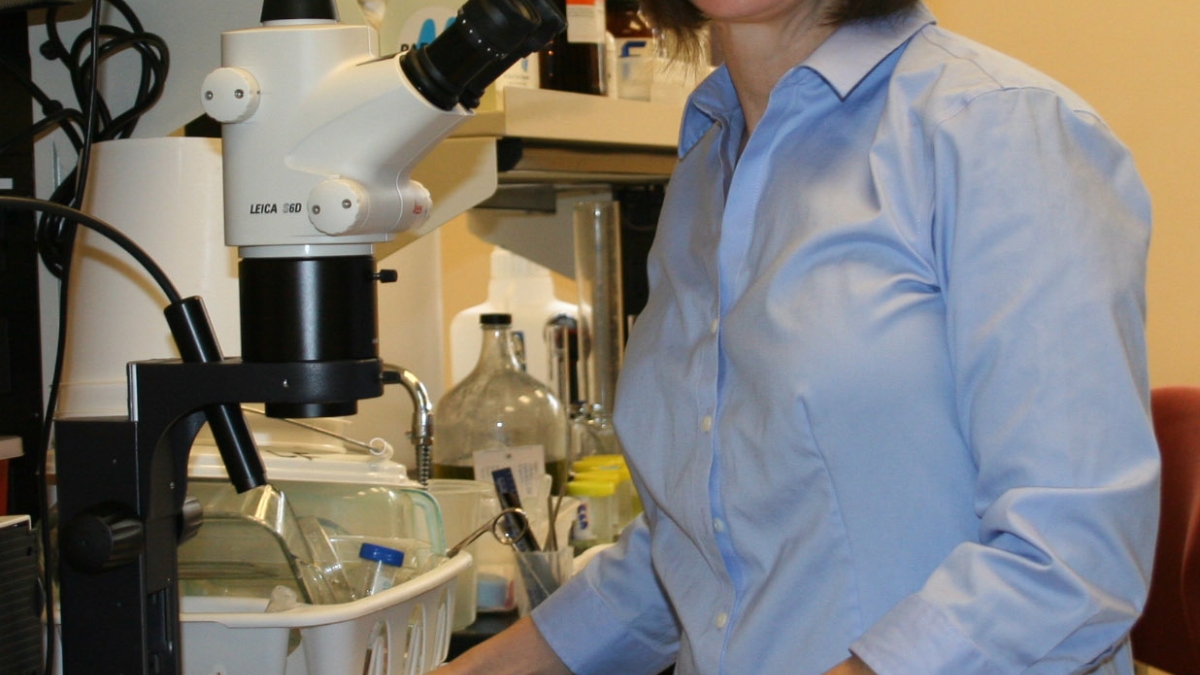Knowledge of anatomy advances via crowdfunding project

Furthering our understanding of the workings of muscles, joints and other body parts without harming the subjects being studied is the goal of an Arizona State University professor and her students. The research team is turning to the public for help through crowdfunding for its “Imaging the Future” project.
In the laboratory of Lara Ferry of ASU’s New College of Interdisciplinary Arts and Sciences, undergraduate students conduct their own independent research projects using cutting-edge visualization tools to identify novel or abnormal bones, muscles or other tissue complexes, without harm to the specimen.
“This means we can study live specimens, or fragile museum specimens that are hundreds of years old in some cases, without harm to the specimen,” said Ferry, who teaches courses in New College’s bachelor’s degree program in life sciences. New College is the core college on ASU’s West campus.
Imaging the Future is among the first of several ASU research projects currently kicking off crowdfunding campaigns. The campaigns are part of ASU’s new, official crowdfunding program, managed by the ASU Foundation for a New American University. Several student ventures have already launched campaigns through the program.
Now, the Office of Knowledge Enterprise Development (OKED) is managing a new effort for faculty research, kicking off a rolling pilot period that began in December and continues through 2014.
Crowdfunding is a means of securing financial support by helping individuals tap into their networks through the Internet. While a lot of research funding relies on receiving large amounts of money from a single donor, crowdfunding campaigns usually succeed through small donations from many individuals.
Support for Imaging the Future helps undergraduate students make substantive contributions to the project. Ferry is typical of New College faculty members in that she strongly supports undergraduate research opportunities.
“Besides being a leading researcher in the field of functional morphology, Dr. Ferry has a strong reputation for being an incredible mentor to graduate and undergraduate students alike,” said Misty Paig-Tran, who recently completed her doctorate at the University of Washington, and now works with Ferry as a post-doctoral research assistant.
“I was really impressed by how successful her lab is at incorporating undergraduates into cutting-edge research, and how often these students go on to graduate degrees,” Paig-Tran said. “Dr. Ferry not only mentors students at ASU, but has provided mentoring to a much larger group of students while she served as the president of the American Elasmobranch Society.”
Undergrads working with Ferry make use of sophisticated imaging tools, including microMRI (magnetic resonance imaging) and microCT (computed tomagraphy). Much of the work focuses on fish no bigger than a person’s finger.
“Fishes are the oldest of the vertebrates, and the most diverse,” Ferry explained. “We are making incredible advances in our ability to understand and diagnose function in these organisms. Key questions we are asking in our research are: How do joints work? How are muscles powering a moving system? Ultimately, we are gaining new and exciting information, and taking our understanding deeper than ever before.”
Working with Ferry is enabling Paig-Tran to conduct research and to emulate Ferry’s success as a student mentor.
“I am learning how to mentor students from a variety of backgrounds, an incredibly valuable skill that I will take with me as I transition from post-doctoral scholar to junior faculty,” Paig-Tran said. “This is perhaps the most exciting aspect of the project. Undergraduates tend to address questions in a very different way than doctoral-level personnel. Sometimes this new eye on old problems leads to great ideas and discovery. For many students the opportunity to work with cutting-edge techniques isn’t available until they enroll in graduate school, so being part of a lab that jump-starts this process is really special.”
You can see all of ASU’s crowdfunding campaigns, powered by the USEED platform, at asu.useed.net. Because contributions are made through the ASU Foundation, a nonprofit organization that supports ASU, donations may be considered charitable contributions.
Jan. 18 is the deadline to make a contribution to the Imaging the Future project.
If you are an ASU researcher interested in raising money through crowdfunding, contact Kathryn Scheckel, assistant director of special projects for OKED, at 480-965-9293. If you are an ASU student or staff member interested in crowdfunding, please contact Shad Hanselman, senior director of the Office of Annual Giving at the ASU Foundation, at 480-965-0516.